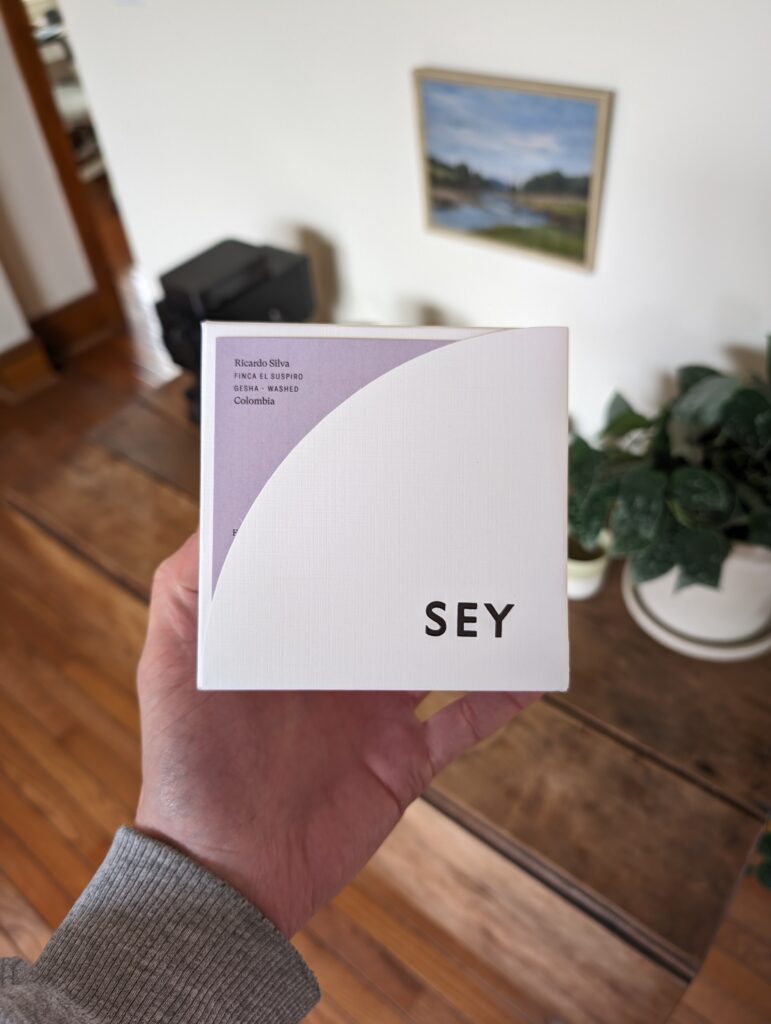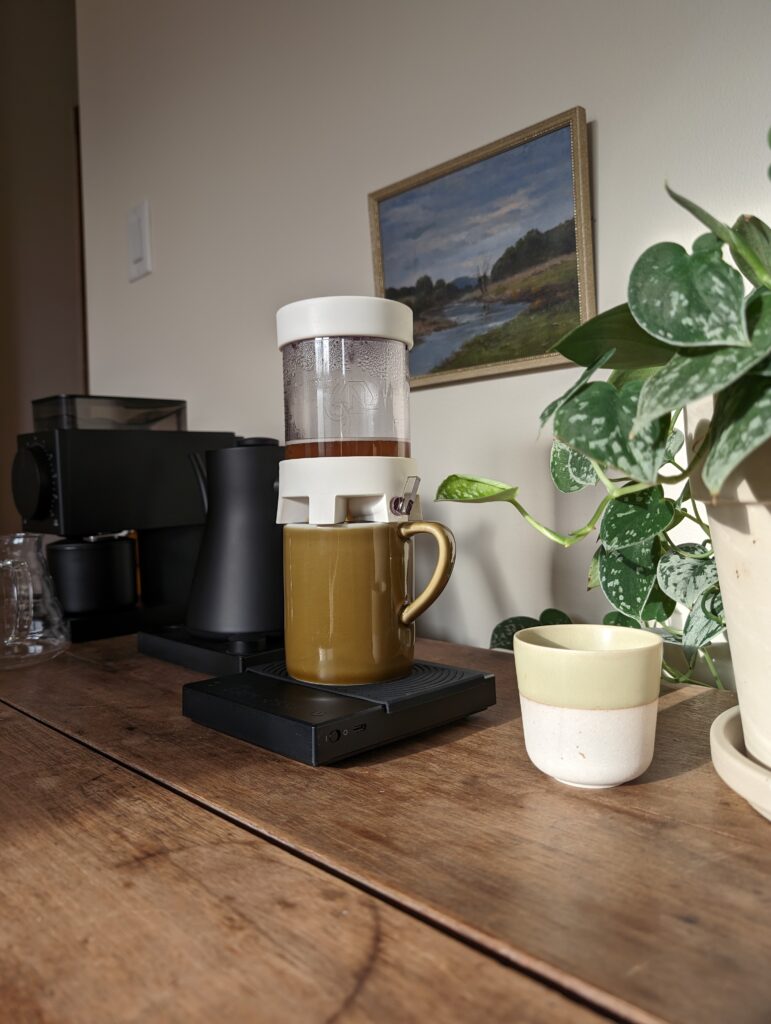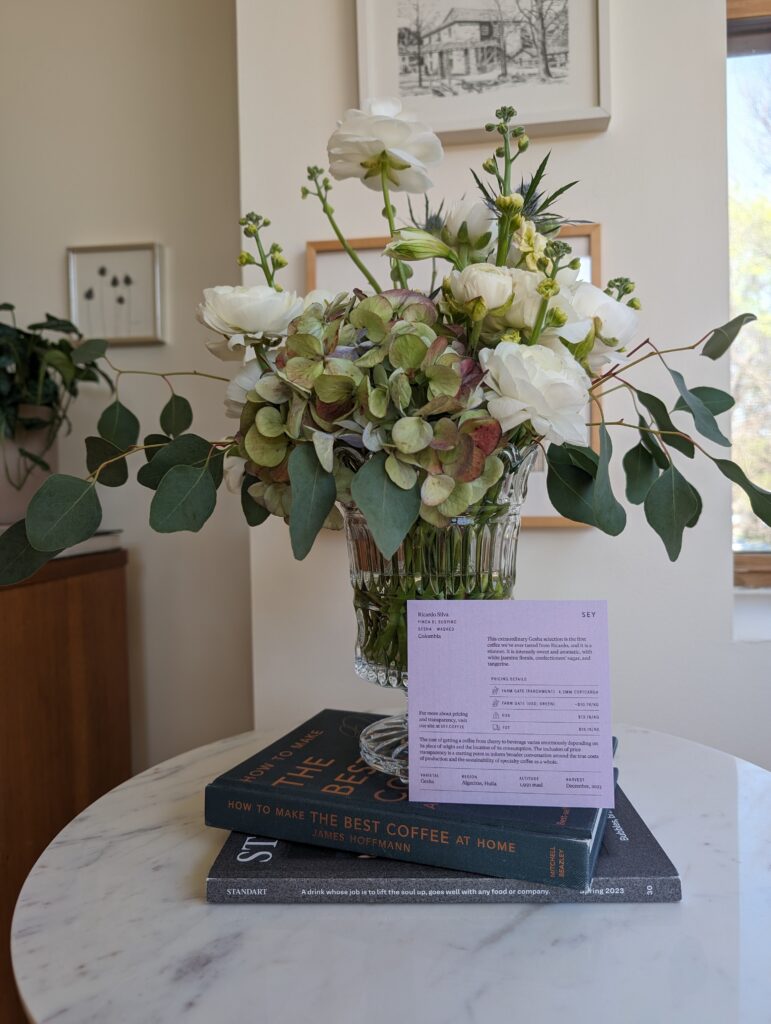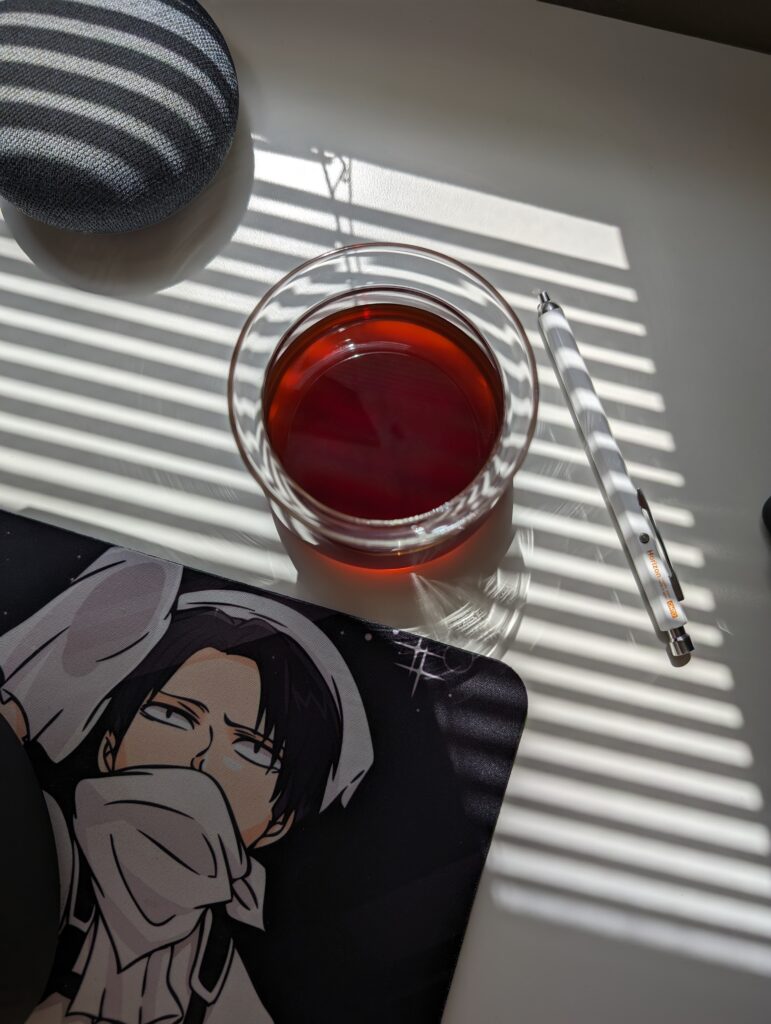Sometimes you brew a coffee and every cup is a banger. That’s been the case this month, with the Ricardo Silva washed Gesha from Sey.

a creamy cup
The first thing that hit me was the smell of this coffee; not all lightly roasted coffees have a strong aroma, but this one was so sweet and inviting.
Sey describes this coffee as, “intensely sweet and aromatic, with white jasmine florals, confectioners’ sugar, and tangerine.” And for me, that was pretty spot on.
When I cupped this coffee, fourteen days off roast, I described it as creamy, tea-like, cereal milk, sweet, floral, and honeysuckle.
When brewed1, this coffee is simply incredible.
At least for my palate, it brings so much of what I enjoy in coffee. When hot, it’s sweet and floral. As it cools, a pleasant citric acidity becomes more pronounced. The body is delicate but really smooth, I kept describing it as creamy.
When I pushed the extraction I tasted more florals, at times leaning towards lemongrass. But the cup stayed very clean. I generally didn’t push it too much because I enjoyed the complexity of having the florals and the citrus notes.
Over a month off roast, every cup has been excellent. I’ll miss this coffee when it’s gone and even managed to make room for a few doses in the freezer.
This was a delightful example of a coffee totally meeting, if not exceeding, the expectations I had when I bought it. Which doesn’t always happen.

tasteful paragraphs
When I buy coffee I consider several factors like, the country of origin, the processing method, the varietal, who grew the coffee, and of course, the tasting notes.
The tasting notes occupy and interesting space; that’s the roasters opportunity to advertise and entice the customer but they also need to accurately communicate the flavor. Too far off base and customers will be disappointed. Too generic and it might not sell.
Sey provides a lot of useful information on each coffee, if you know how to decode it you can narrow down and select what you’ll most likely enjoy. Of course, it is still a form of advertising but I find Sey’s descriptions usually quite helpful.
Its tasting notes are often broad-ish categories, like “yellow fruit”, instead of something ultra-specific.2 This makes it easier to conjure a flavor in your mind. But in addition to the tasting notes, don’t sleep on Sey’s processing descriptions.
If you’re deep into the coffee rabbit hole, you know a “washed” coffee isn’t just rinsed like you’re cleaning an apple from the grocery store. There are many steps and decisions made during the process that have a big effect on flavor.
I won’t get deep into trying to describe all of the options, nor do I pretend to be an expert, but as a home brewer, you can start to learn more and buy coffees that were processed similarly to ones you’ve enjoyed in the past.
As a very broad guide, generally, the longer the fermentations are, the wilder the flavors get. Now, a 48-hour in cherry fermentation isn’t going to taste like a banana-coferment but it will taste different relative to a coffee that was depupled sooner.
Anyway, long tangent to say this coffee’s description caught my eye.
It had quite the alluring set of sentences; “extraordinary Gesha” “a stunner” and “one of the best Geshas we have ever tasted from Colombia”. How could I say no to that.
But actually what drew me to this coffee were the tasting notes; indicating a sweet and citric cup, something I’ve really enjoyed in the past. Along with a process that should result in a clean, delicate coffee.
There was one factor however, that did not strongly sway me towards buying and that was the variety.

oh glorious gesha
Gesha (also written Geisha) is a funny varietal. It’s been perhaps the most mythical of Arabica varieties since it’s re-emergence into commercial production in the early 2000s. But in some ways, its popularity has also been to its determent. It’s easy to see a Gesha and think, “wow, this is a special and rare coffee, this is going to taste amazing” then be utterly disappointed.
I couldn’t tell you the first Gesha I had because it was honestly not at all memorable.
The popularity of Gesha, and the high prices it can fetch, have incentivized a lot of farmers to plant it. (And if that means they get paid more for their coffee, that’s a great thing.) But as a coffee consumer, Gesha is kind of everywhere now.
I was recently at SCA Expo (dedicated blog post coming soon) and it felt like every roaster was brewing samples of a Gesha. The more repeated something is the more chance there is to be disappointed by it.
Coffee varieties are useful when buying coffee and determining if you’re likely to enjoy the cup profile but they aren’t a guarantee. Geshas grown on two different farms, each with their own picking and processing methodology, won’t taste the same. Let alone two Geshas grown in different countries. Many Geshas are great but many are also just fine.
This is a bit of a tangent because this Gesha was, as Sey says, “a stunner”. Take it as a word of caution when getting swept into varietal-hype3. Chiroso or Sidra are also good examples of coffees that can be really good or really bad depending on who grows and roasts them.
reading between the lines
I encourage you to develop your own personal coffee evaluation metrics. This will lead to many more enjoyable cups and fewer frustrating brews. Hopefully more roasters will expand the information they provide for each coffee. Reading how the producer works and the details of the processing method can better inform your purchasing decision while also educating consumers on how much work goes into producing coffee.

brewing advice
Note: I don’t plan on giving specific recipes in these posts. Instead, I’ll provide guidance or variations in approach based on the coffee’s characteristics.
- Rest this coffee at least two weeks
- Push extractions for more flavors, lower extraction if you want more citrus
- I enjoyed this coffee most on the Pulsar. I think the extended contact time helped make it more expressive